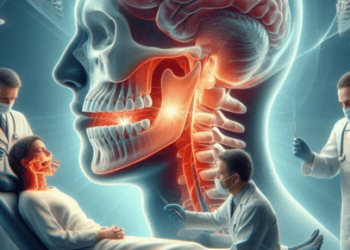
The Importance of Daily Fitness
Incorporating daily fitness into your routine is crucial for overall health and well-being. Here’s a comprehensive guide to help you stay active and achieve your fitness goals.
Set Clear Goals: Define Your Objectives
Start by setting clear and achievable fitness goals, whether it’s losing weight, building muscle, improving flexibility, or enhancing cardiovascular health.
Create a Workout Plan: Schedule Your Activities
Develop a structured workout plan that includes a variety of exercises targeting different muscle groups and aspects of fitness, such as strength, endurance, flexibility, and balance.
Warm-Up Routine: Prepare Your Body
Begin each workout session with a proper warm-up routine to prepare your muscles, joints, and cardiovascular system for exercise, reducing the risk of injury.
Cardiovascular Exercise: Get Your Heart Pumping
Incorporate at least 30 minutes of cardiovascular exercise into your daily routine, such as brisk walking, running, cycling, swimming, or dancing, to improve heart health and burn calories.
Strength Training: Build Muscle and Bone Density
Include strength training exercises 2-3 times per week to build muscle mass, increase metabolism, and improve bone density, using free weights, resistance bands, or bodyweight exercises.
Flexibility Exercises: Enhance Range of Motion
Incorporate flexibility exercises such as yoga, Pilates, or stretching routines to improve joint mobility, reduce muscle stiffness, and prevent injuries.
Core Strengthening: Support Your Spine
Focus on core strengthening exercises to target the muscles of the abdomen, lower back, and pelvis, improving stability, posture, and overall functional movement.
Balance and Stability Training: Prevent Falls
Integrate balance and stability exercises into your routine to improve proprioception, coordination, and prevent falls, using tools like balance boards, stability balls, or single-leg exercises.
Functional Movement Patterns: Mimic Real-Life Activities
Include functional movement patterns that mimic real-life activities, such as squats, lunges, and pushing/pulling motions, to enhance overall movement quality and functionality.
Interval Training: Boost Your Metabolism
Incorporate high-intensity interval training (HIIT) workouts into your routine to maximize calorie burn, increase endurance, and improve cardiovascular fitness in less time.
Mind-Body Connection: Practice Mindfulness
Cultivate the mind-body connection through mindfulness practices such as meditation, deep breathing, or tai chi, to reduce stress, enhance focus, and promote overall well-being.
Hydration: Drink Plenty of Water
Stay hydrated throughout the day by drinking plenty of water, especially before, during, and after exercise, to maintain optimal performance and prevent dehydration.
Nutrition: Fuel Your Body Wisely
Eat a balanced diet rich in whole foods, including lean proteins, fruits, vegetables, whole grains, and healthy fats, to provide essential nutrients and support energy levels and recovery.
Post-Workout Recovery: Rest and Repair
Allow time for post-workout recovery by incorporating rest days into your routine, getting adequate sleep, and practicing recovery techniques such as foam rolling and massage.
Listen to Your Body: Avoid Overtraining
Pay attention to your body’s signals and avoid overtraining by gradually increasing the intensity and duration of your workouts, and taking breaks when needed.
Stay Consistent: Establish Habits
Consistency is key to long-term success, so make exercise a daily habit by scheduling it into your routine and prioritizing your health and fitness goals.
Variety: Keep It Interesting
Keep your workouts interesting and engaging by varying your activities, trying new exercises, and exploring different fitness modalities to prevent boredom and plateaus.
Accountability: Find Support
Find a workout buddy, join a fitness class, or hire a personal trainer to provide accountability, motivation, and support on your fitness journey.
Track Your Progress: Monitor Your Results
Track your progress by keeping a fitness journal, logging your workouts, recording measurements, and celebrating your achievements along the way.
Adjust as Needed: Listen to Feedback
Be flexible and willing to adjust your workout plan based on feedback from your body, progress, and changing goals, to keep your routine effective and sustainable.
Seek Professional Guidance: Consult Experts
Consult fitness professionals, such as personal trainers, exercise physiologists, or physical therapists, for personalized guidance, assessments, and recommendations.
Enjoy the Process: Have Fun
Most importantly, enjoy the process of improving your fitness and well-being, and celebrate the positive changes you’re making in your life each day.













